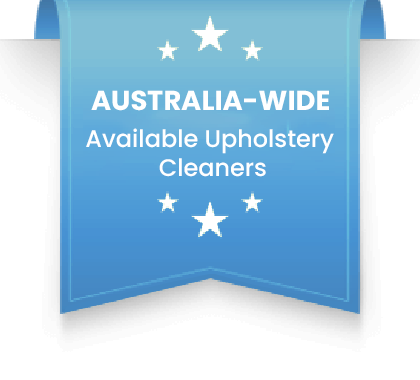Vinyl furniture is a practical and stylish addition to any home or office. Its durability and water-resistant properties make it a popular choice for both indoor and outdoor spaces. However, even the toughest vinyl surfaces can accumulate dirt, stains, and mildew over time. Proper care is essential to maintain its appearance and longevity.
Why Vinyl Furniture Needs Regular Cleaning
Vinyl furniture is low-maintenance, but neglecting regular care can lead to:
- Dirt Build-Up: Dust and debris can settle into the surface, dulling its shine.
- Stains: Spills from food and drinks can leave unsightly marks.
- Mildew and Mold: Vinyl’s water-resistant surface can trap moisture, creating an ideal environment for mold and mildew to grow.
With routine upholstery cleaning, you can prevent these issues and keep your furniture in pristine condition.
Tools and Materials You’ll Need
Before starting, gather the following items:
- Vacuum Cleaner: With an upholstery attachment.
- Mild Dish Soap: For cleaning stains and grime.
- White Vinegar: A natural deodorizer and mold remover.
- Baking Soda: For tough stains and odors.
- Soft Microfiber Cloths: Gentle on vinyl surfaces.
- Soft-Bristle Brush: For scrubbing stubborn dirt.
- Rubbing Alcohol: For ink or tough stains.
- Spray Bottle: For applying cleaning solutions.
- Towels: To dry the furniture.
- Vinyl Protectant: To restore shine and protect the surface.
10 Easy Steps to Clean Vinyl Furniture
1. Remove Loose Dirt
- Start by vacuuming the furniture using an upholstery attachment to remove dust and debris.
- Pay attention to seams and crevices where dirt tends to accumulate.
2. Wipe Down with a Damp Cloth
- Use a damp microfiber cloth to wipe the surface, removing surface-level dirt.
- This step helps prevent dirt from spreading during cleaning.
3. Mix a Cleaning Solution
- Combine one tablespoon of mild dish soap with two cups of warm water in a spray bottle.
- For tougher stains or odors, add a tablespoon of white vinegar.
4. Spot Test the Solution
- Before cleaning the entire piece, test the solution on a hidden area to ensure it doesn’t cause discoloration or damage.
5. Clean the Surface
- Spray the cleaning solution onto the vinyl and use a soft cloth to wipe the surface.
- For stubborn spots, gently scrub with a soft-bristle brush.
6. Tackle Tough Stains
- Use a small amount of rubbing alcohol on a cloth to remove ink, grease, or tough stains.
- Rub gently to avoid damaging the vinyl.
7. Eliminate Mold and Mildew
- For mildew or mold, spray a solution of equal parts white vinegar and water onto the affected area.
- Let it sit for a few minutes, then scrub with a soft brush. If the issue persists, consult professionals offering Mildew and Mold Removal from Upholstery Near Me for a deep clean.
8. Rinse Thoroughly
- Dampen a clean cloth with plain water and wipe the entire surface to remove soap residue.
- Ensure no cleaning solution is left behind, as it can attract dirt.
9. Dry Completely
- Use a towel to pat the furniture dry. For outdoor vinyl furniture, allow it to air dry in the shade to prevent sun damage.
10. Apply a Vinyl Protectant
- Finish by applying a vinyl protectant to restore the furniture’s shine and provide a protective barrier against future stains and UV damage.
Tips for Maintaining Vinyl Furniture
- Regular Dusting: Wipe down your furniture weekly to prevent dirt build-up.
- Avoid Harsh Chemicals: Never use bleach, ammonia, or abrasive cleaners, as they can damage the vinyl surface.
- Protect from Sunlight: Prolonged exposure to direct sunlight can cause fading and cracking. Use furniture covers or place the furniture in shaded areas.
- Address Spills Quickly: Clean spills immediately to prevent staining.
- Rotate Outdoor Furniture: If using vinyl furniture outdoors, rotate pieces occasionally to prevent uneven fading.
Why Professional Upholstery Cleaning Matters
While regular maintenance keeps vinyl furniture in great condition, professional upholstery cleaning offers several advantages:
- Deep Cleaning: Removes embedded dirt and stubborn stains.
- Mold and Mildew Prevention: Professional treatments ensure thorough cleaning and sanitization.
- Restoration: Protects your furniture from wear and tear, extending its lifespan.
When to Call Professionals
Some situations require expert care, such as:
- Persistent Stains: Tough stains that DIY methods can’t remove.
- Mold and Mildew: Extensive mold growth requires professional attention to prevent further damage.
- Restoration Needs: If your furniture looks dull or worn, professional services can restore its shine and protect it from future damage.
Conclusion
Keeping your vinyl furniture clean and fresh doesn’t have to be a challenge. By following these ten easy steps and incorporating regular maintenance, you can ensure your furniture stays in excellent condition for years. For tougher issues like mold or deep stains, professional services like Mildew and Mold Removal from Upholstery can provide the thorough cleaning and care your furniture needs. With the right approach, your vinyl furniture will remain a stylish and durable part of your home.
Published on: February 5, 2025

